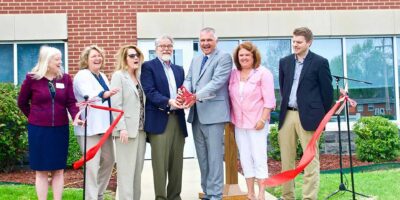Translational Science Benefits
Economic benefits (Commercial products)
Definition
Creation of businesses or non-profit organizations. Nonprofit organizations often focus on a specific disease, supporting preclinical and clinical development and increasingly, overseeing project management. Commercial entities support the production, distribution, and marketing of a wide variety of research products and services to bring them to the market. Examples include organizations that could connect basic scientists and clinicians in specific areas to move studies forward, aid in the dissemination of new diagnostic procedures, or help increase access to services in low-resourced communities.
Rationale
Creating a commercial or nonprofit organization helps increase the translational impact of scientific discoveries by helping to reach more people. Organizations that are established as a result of an existing need in translational research or a need identified through clinical and translational research can have benefits all along the translational research continuum.
Guidance
Advice from authors on searching for information:
The background information on how a business or non-profit entity was founded either directly or indirectly as a result of advances in clinical or translational science may be difficult to locate in general, and more or less straightforward to find in specific instances. Those researchers and administrators interested in a particular organization should first try to contact founders or original researchers from the source project. Others interested in more general examples of organizations arising out of translational research may try to narrow searches to specific sectors (e.g., non-profit organizations in genomic services or businesses offering health care transportation services).
Resources & Data
Organizations, repositories, websites, and other sources where you can find more information:
Local
- Gateway Center for Giving. Near comprehensive database of non-profits in the St. Louis region containing several points of information for each.
- St. Louis Business Directory & Yellow pages. General listings of local businesses.
- St. Louis Community Foundation. Information and other resources to identify and locate non-profit organizations.
- United Way of Greater St. Louis. Local chapter of the general non-profit coordinator and service provider in the metropolitan area.
General
- Guidestar Directory. Listing of US charities and non-profit organizations. Note that an account may be necessary (through University or business) for full access.
- Union of International Associations. Organization offering datasets and variables on non-profit and associational organizations. Some data require fees for access.
- US Securities & Exchange Commission. List of registered US companies.
Data Limitations
Challenges you may encounter while searching for information:
While there are many lists of both non-profit organizations and businesses at many geographic levels (e.g., local, state, national, regional, and global), most are incredibly lengthy and may or may not contain information on the rationale for the founding of each entity.
Publications
Articles, books, and other publications in translational science using the indicator:
- Denis-Claude R, Alarco AM, Rosario I. CellCAN: A Unique Enabler of Regenerative Medicine and Cell Therapy in Canada. Stem Cells and Development. 2014 Dec;23(S1). doi: 10.1089/scd.2014.0354.
- Zaratin P, Battaglia MA, Abbracchio MP. Nonprofit foundations spur translational research. Trends Pharmacol Sci. 2014 Nov;35(11):552-5. doi: 10.1016/j.tips.2014.09.003.
Case Studies

Oxysterols for Treatment of Perinatal Brain Injury
A first-in-class therapy to prevent cerebral palsy in premature infants.
Clinical & medical benefits
Community & public health benefits
Economic benefits

Using 3D Holograms to Treat Cardiac Arrhythmia
Developing and using 3D hologram technology (ELVIS) to guide physicians during cardiac ablation procedures.
Clinical & medical benefits
Community & public health benefits
Economic benefits

Advancing the Science of Addiction Recovery
Improving addiction outcomes through the CAPA Collaboration (a community-university partnership) and the development of a clinical dashboard to guide and track recovery.
Clinical & medical benefits
Community & public health benefits
Economic benefits

